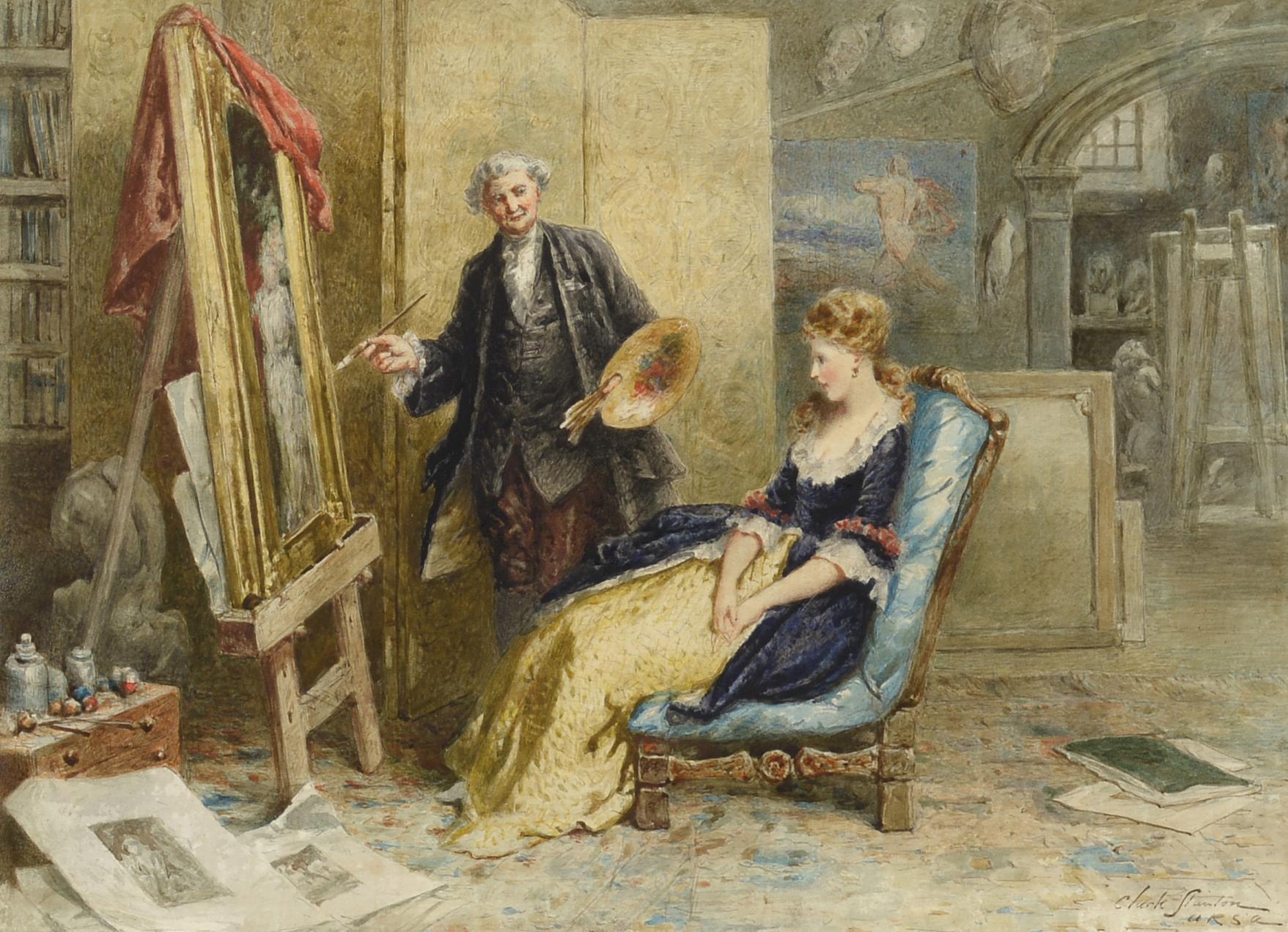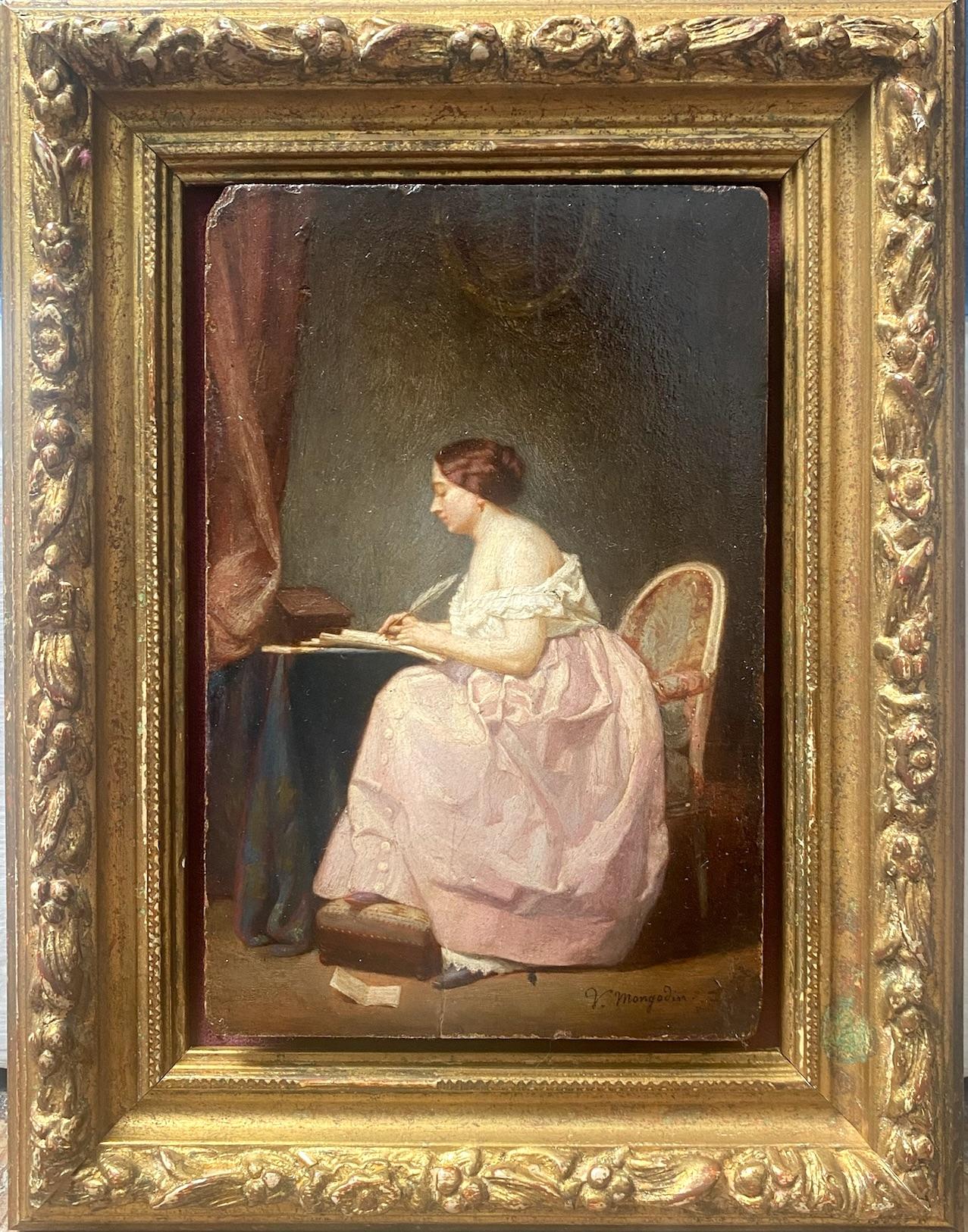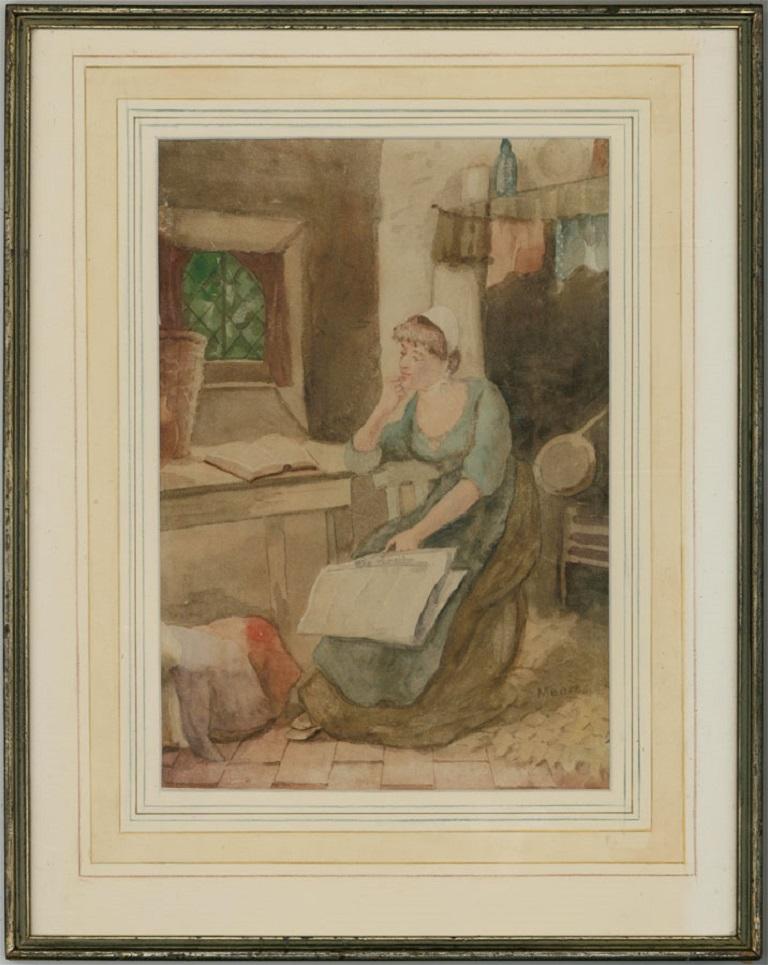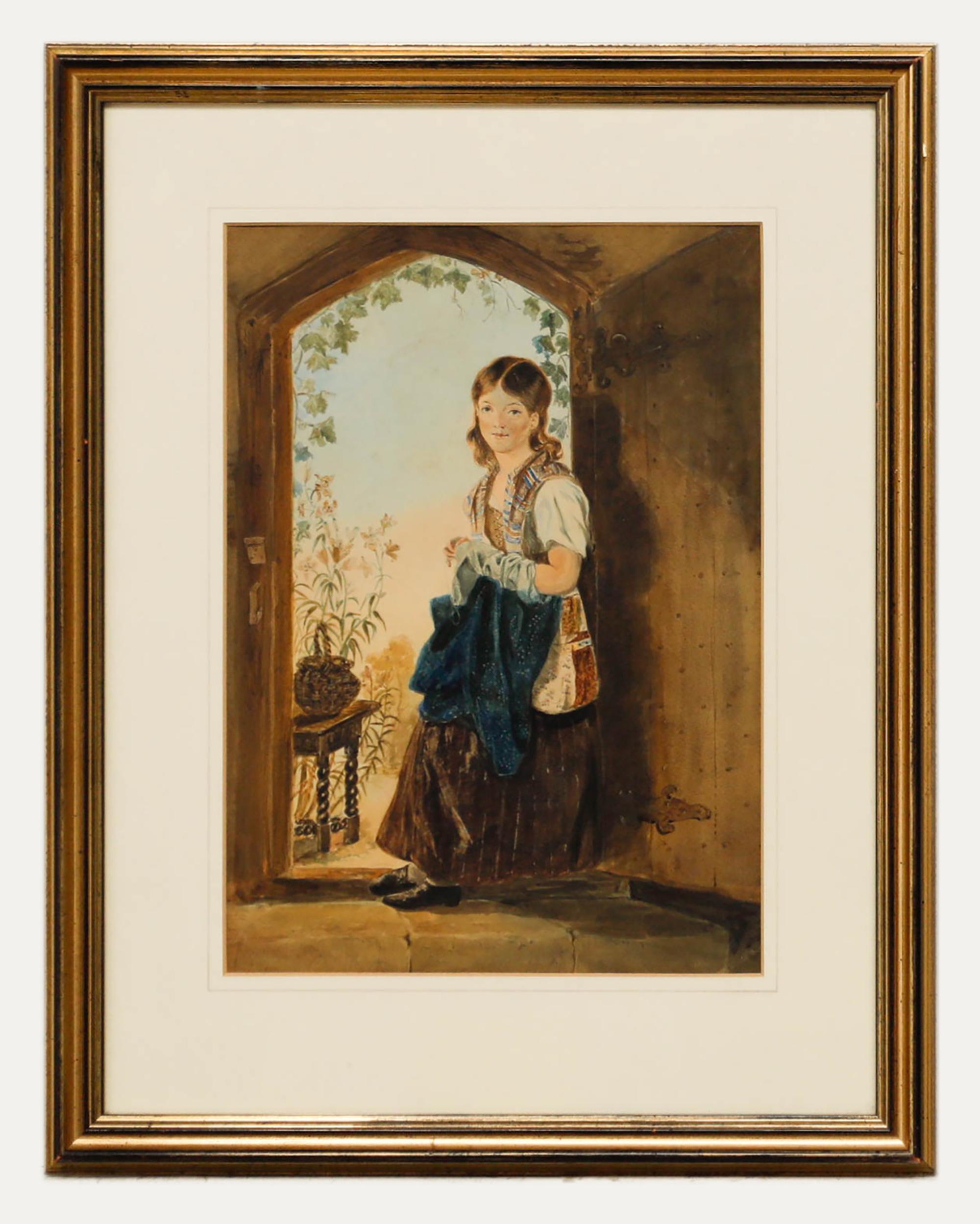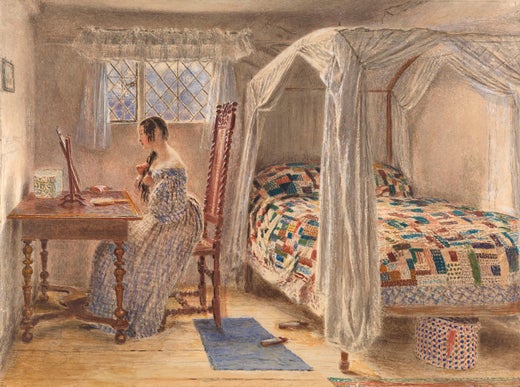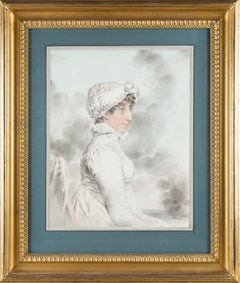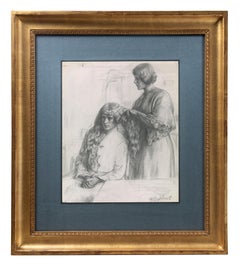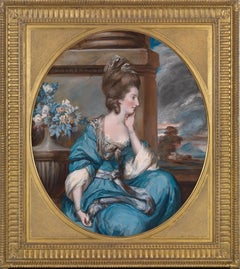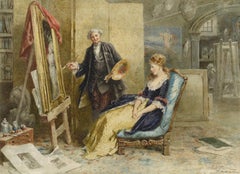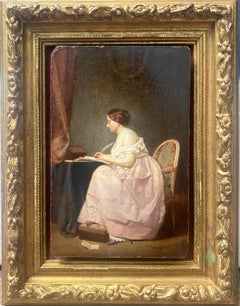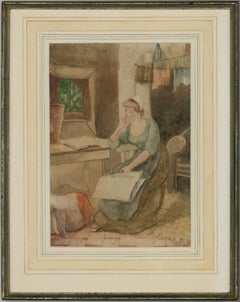William Henry Hunt19th century watercolour of a Girl at her Dressing TableCirca 1833
Circa 1833
About the Item
- Creator:William Henry Hunt (1790 - 1864, British)
- Creation Year:Circa 1833
- Dimensions:Height: 20.25 in (51.44 cm)Width: 16.5 in (41.91 cm)
- Medium:
- Movement & Style:
- Period:
- Condition:Preserved in excellent condition, the watercolour remains very fresh.
- Gallery Location:London, GB
- Reference Number:1stDibs: LU150727722902
William Henry Hunt
William Henry Hunt was a painter and watercolorist of fruit and flowers, landscapes and rustic genre. Hunt’s works influenced many Victorian artists. His parents decided on an artistic career for him, due to a deformity in his legs, which made it difficult for him to walk. He was apprenticed to John Varley in about 1804, and one of his fellow pupils was John Linnell. The two artists liked each other's work and went on sketching tours together, including one to Hastings in 1809. In 1807, Hunt began to exhibit oils at the RA and in 1808 entered RA schools. By 1815, he had set up on his own as a rustic and architectural painter. Hunt was elected to the ARWS in 1824 and the Old Watercolour Society in 1826. From about 1827, he began to paint fruit and flowers and candlelight scenes. Over the years his technique also changed. Using body-color, he developed an individual method of hatching and stippling over a white ground, similar to that of Myles Birket Foster.
- ShippingRetrieving quote...Shipping from: London, United Kingdom
- Return Policy
More From This Seller
View All19th Century Old Masters Portrait Drawings and Watercolors
Pencil, Watercolor
Early 19th Century Old Masters Portrait Drawings and Watercolors
Pencil, Watercolor
20th Century Figurative Drawings and Watercolors
Pencil
18th Century Old Masters Portrait Drawings and Watercolors
Pastel, Gouache
19th Century Old Masters Portrait Drawings and Watercolors
Pencil
18th Century Old Masters Figurative Drawings and Watercolors
Chalk
You May Also Like
Late 19th Century Realist Interior Drawings and Watercolors
Watercolor
1860s French School Interior Paintings
Oil, Wood Panel
19th Century Portrait Drawings and Watercolors
Watercolor
19th Century Portrait Drawings and Watercolors
Watercolor
19th Century Portrait Drawings and Watercolors
Watercolor
19th Century Portrait Drawings and Watercolors
Watercolor
